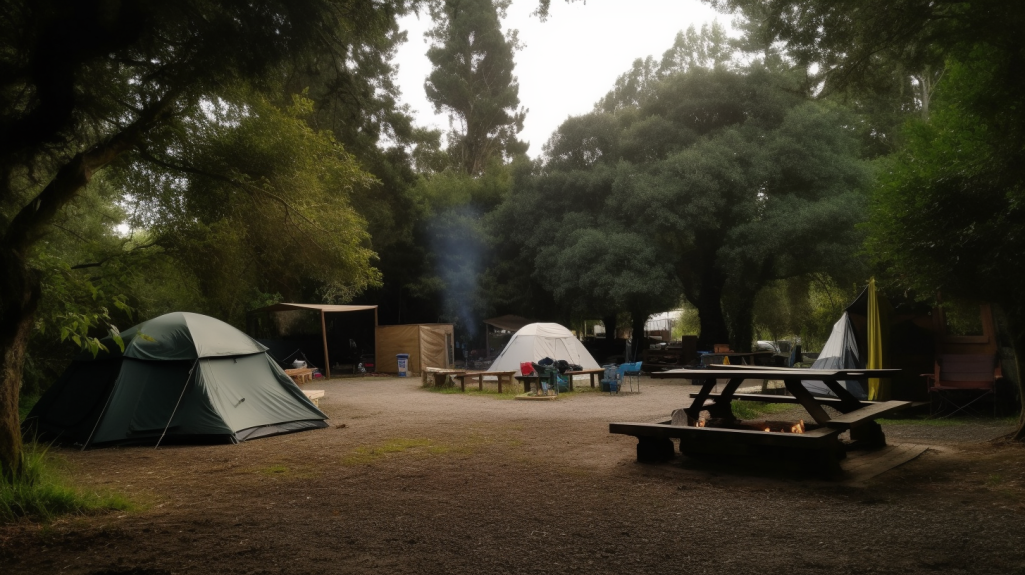Choosing the perfect campsite is a fundamental aspect of any outdoor adventure. Whether you’re an experienced outdoors enthusiast or a novice camper, selecting the right campsite can greatly enhance your camping experience. Factors like location, safety, and adherence to regulations all play crucial roles in determining the quality of your camping trip. In this article, we will provide you with a comprehensive guide on campsite selection, offering valuable tips and insights to help you find the ideal spot for your next outdoor excursion.
Location, Location, Location
The first and arguably most important consideration when selecting a campsite is its location. Your campsite’s location can make or break your camping experience, so it’s essential to choose wisely. Here are some key factors to keep in mind:
A. Proximity to Water Sources: One of the top priorities when camping is access to clean water. A campsite near a river, lake, or stream not only provides a convenient water source for drinking, cooking, and cleaning but also offers picturesque views and recreational opportunities like fishing or swimming. However, be cautious about camping too close to water bodies, as they can flood during heavy rains or become habitats for insects like mosquitoes.
B. Elevation and Terrain: The terrain of your campsite matters for both comfort and safety. Look for a level, well-drained area that is not prone to flooding. High-elevation campsites can offer cooler temperatures in hot weather, but they may also be more exposed to wind and harsh weather conditions.
C. Scenic Beauty: Part of the allure of camping is connecting with nature and enjoying beautiful landscapes. Choose a campsite that offers scenic views, whether it’s a mountain vista, a tranquil forest, or a beachside paradise. A visually appealing campsite can enhance your camping experience and provide memorable moments.
D. Proximity to Trails and Activities: Consider the outdoor activities you plan to pursue during your camping trip. If you’re an avid hiker, choose a campsite near hiking trails. Likewise, if you enjoy birdwatching, look for sites near birding hotspots. Proximity to activities you love can maximize your outdoor enjoyment.
Safety First
Safety should always be a top priority when camping. Here are some safety considerations to keep in mind:
A. Wildlife Concerns: Different regions may have varying wildlife populations. Research the area you plan to camp in and take precautions accordingly. This might include storing food in bear-resistant containers, keeping a safe distance from wildlife, and knowing how to respond to encounters with potentially dangerous animals.
B. Fire Safety: Campfires are a quintessential part of camping, but they also pose risks. Ensure your campsite has designated fire rings or pits and check for any fire bans or restrictions in the area. Always follow Leave No Trace principles and never leave a fire unattended.
C. Weather Awareness: Check the weather forecast for your camping destination and prepare accordingly. Pack appropriate clothing and gear for the expected conditions. Be ready for sudden changes in weather, especially in mountainous or coastal areas.
D. Terrain and Hazards: Survey the campsite for potential hazards like overhanging branches, dead trees, or loose rocks. Clear any debris or obstacles to ensure a safe and comfortable camping experience.
Regulations and Leave No Trace Ethics
Responsible camping means following regulations and practicing Leave No Trace principles to minimize your impact on the environment. Here’s how to do it:
A. Check Camping Regulations: Different campgrounds and public lands have their own rules and regulations. These may include designated campsites, camping permits, and fire restrictions. Always check with the relevant authorities or park rangers for the most up-to-date information.
B. Leave No Trace (LNT) Principles: Leave No Trace is a set of ethical guidelines that promote responsible outdoor recreation. Follow the seven LNT principles, which include packing out all trash, minimizing campfire impact, and respecting wildlife and other campers. Practicing LNT ensures that the natural beauty of the outdoors remains unspoiled for future generations.
C. Campsite Distances: Respect established campsite boundaries and maintain a reasonable distance from neighboring campers. This ensures privacy and minimizes noise pollution, contributing to a more peaceful camping experience for everyone.
D. Campsite Duration: Be aware of maximum stay limits at your chosen campsite. Overstaying your welcome can lead to overcrowding and environmental degradation.
Amenities and Comfort
While some campers prefer a rugged, backcountry experience, others seek more comfort. Consider your preferences and requirements when choosing a campsite:
A. Campground Facilities: Campgrounds often provide amenities like restrooms, potable water, picnic tables, and fire rings. These conveniences can make camping more comfortable, especially for families or those new to camping.
B. Backcountry vs. Frontcountry: Decide whether you want a backcountry experience, where you hike or paddle to a remote site, or if you prefer frontcountry camping with easy access to your vehicle. Your choice will dictate the type of campsite you should look for.
C. Privacy and Seclusion: Some campers enjoy the solitude of a remote campsite, while others prefer the camaraderie of a bustling campground. Consider your desire for privacy when selecting a campsite, and choose accordingly.
Conclusion
Finding the perfect campsite is a skill that can greatly enhance your outdoor adventures. By considering factors like location, safety, and adherence to regulations, you can ensure a memorable and enjoyable camping experience. Remember that each camping trip is a unique opportunity to connect with nature, relax, and create lasting memories, so choose your campsite wisely and responsibly. Happy camping!

